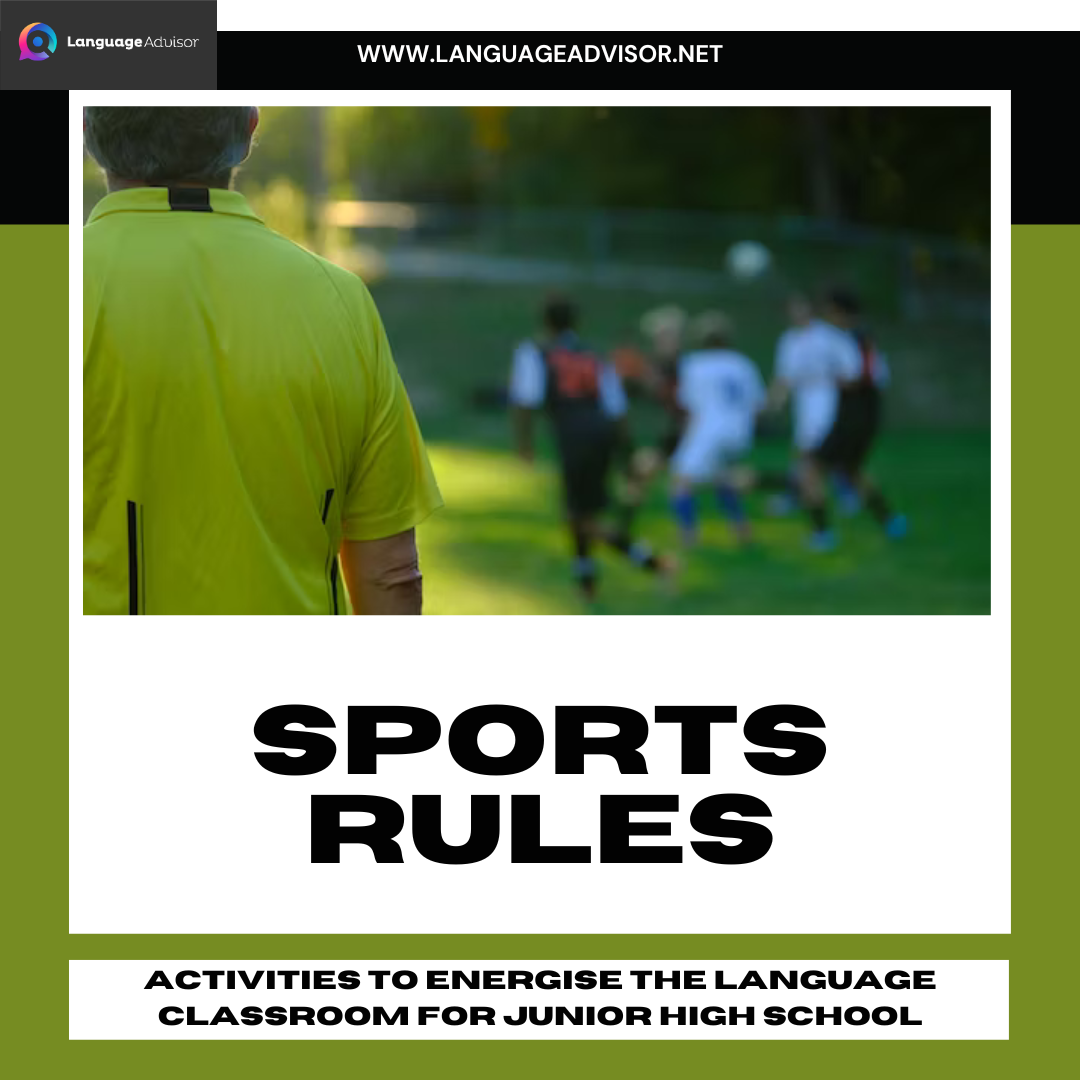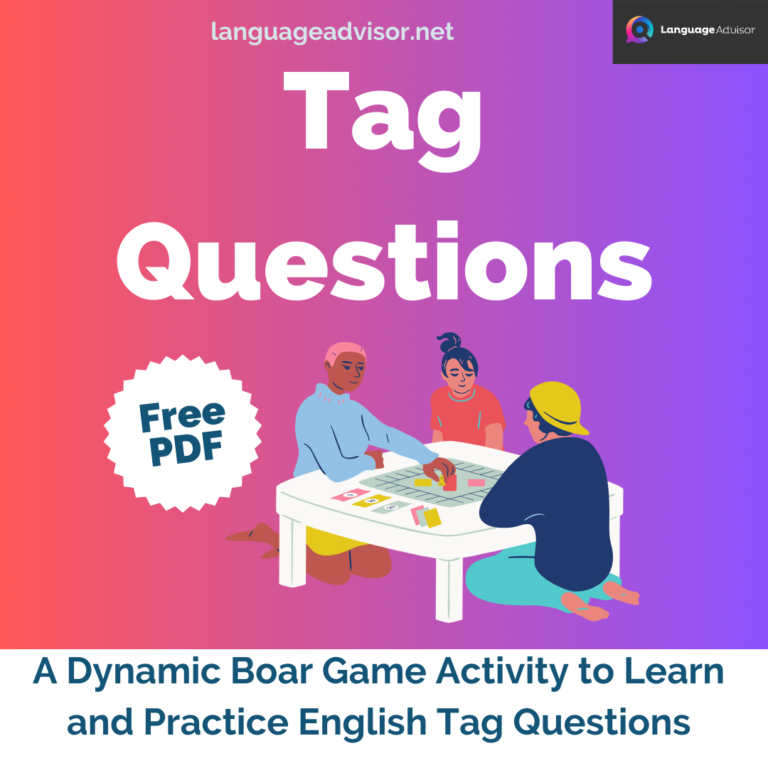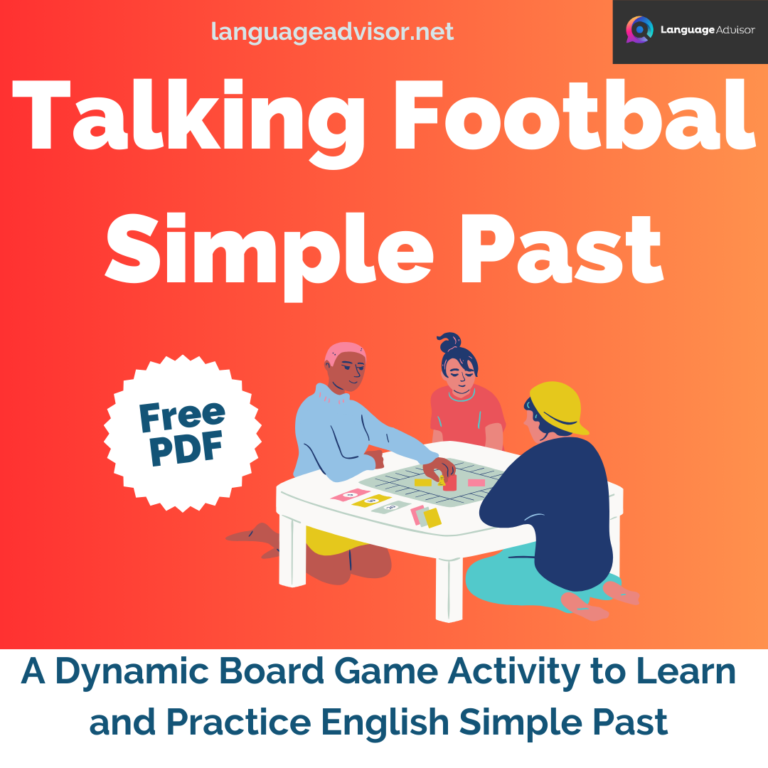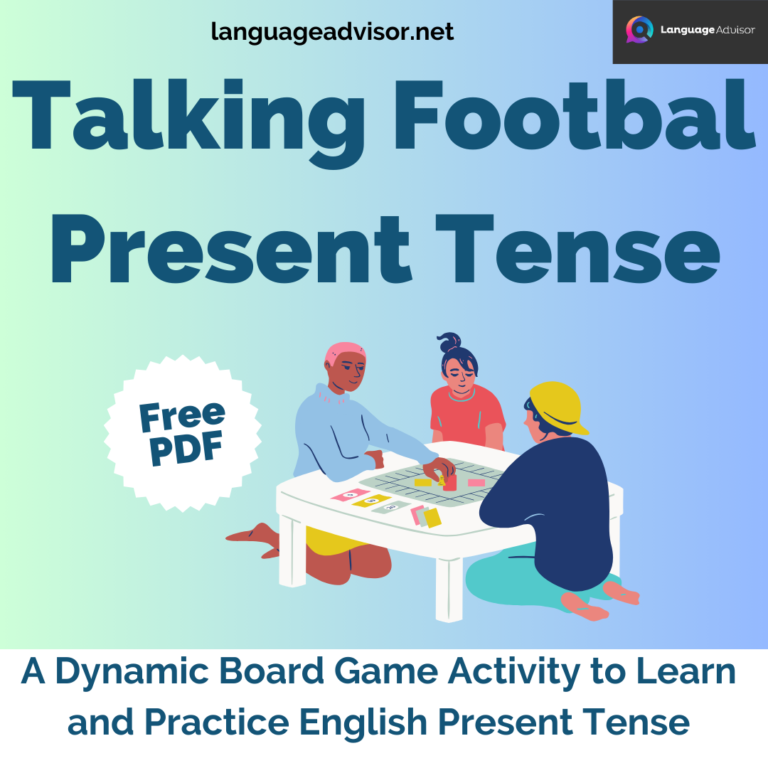SPORTS RULES. Games and Activities to Energise the Language Classroom for Junior High School
SPORTS RULES

Energising Language Classroom Activities for Junior High School: A Teacher’s Guide
Junior high school students often find language classes challenging, but as a language teacher, you have the power to transform these challenges into engaging learning experiences. Classroom activities are the key to achieving this transformation. These activities not only make learning enjoyable but also foster a deeper understanding of the language, leading to improved fluency and proficiency. In this blog post, we will explore a diverse range of innovative and interactive language classroom activities designed specifically for junior high school students. Whether you’re looking to enhance vocabulary retention, boost conversational skills, or make grammar lessons more enjoyable, this guide will provide you with a rich array of strategies to create a dynamic and effective learning environment for your students. Let’s embark on this journey to energize your language classroom and inspire your students to become passionate language learners.

SPORTS RULES
Target Group: 2nd year
Difficulty Level: Fundamentals
Activity Objective: To practice listening skills and to acquire an understanding of the use of “must” and “have to” in sports rules
SPORTS RULES – Procedure
Once students have been organised into groups of four and a set of cards for the game has been distributed to each group, a brief explanation of the game should be given. To start the game, select a sport from those given and read the corresponding passage for that sport. This passage uses a
combination of the grammar patterns ‘must’ and ‘have to’ to describe the rules of a sport. As soon as students realise which sport you are referring to, they must try to take that card first. The fastest person in each group to take the card keeps it. The person with the most cards at the end of the
game wins.
Materials and Preparation
Depending on your class size, seven or eight sets of fourteen premade game cards are required.
Each card has a picture of a sport on them. A list containing a description of each sport and its rules is also required.
Suggestions and Advice
Higher level students may be able to get the cards before the entire hint has been read. It is recommended that a rule should be emplaced so that students can only attempt to grab the card after the teacher has finished giving the description and has said “Go”.
SPORTS RULES
Kendo
It has many levels. You can have a match against a person in the same level. You must wear a special set of gear and use a long bamboo sword. When you attack you may sometimes hit the person with a big shout.
Baseball
You must use a bat to hit the ball. Japan has a professional league. It must have 9 players on one team.
Swimming
There are different ways of doing this sport; for example, breaststroke and freestyle. You may love to do this sport in summer. You can do it indoor and outdoor.
Tennis
You must use a racket. You can play this sport softball style or hardball style. You must play it on a court.
Judo
You usually wear a white wear. You can get a point if you can throw the person. Asami Haruna is famous for this sport.
Volleyball
You must keep the ball in the air. You may ‘serve’ or ‘attack’. You must have six players.
Ice Skating
You have to put a pair of specials shoes on. You can play this sport indoor and outdoor. You must play this sport on ice.
Gateball
Japan introduced this sport to the world. You have to use sticks, gates and a goal pole for the game. It is a team sport and it is popular for Japanese old people.
Skiing
You have to wear special shoes and get on two long boards to play. You also must hold two sticks. It is a major winter sport.
Table Tennis
You must use a small racket and a small ball. You have to play it on the table.
American Football
You must wear a helmet and body protection gear. You can tackle and have to run fast. In the U.S., they have a professional league.
Basketball
You must not walk more than three steps with the ball. You can get three points sometimes. Michael Jordan is a legendary player of this sport.
Sumo
You can wear only one thing. You have to use both your skill and power. It is the national sport of Japan.
Soccer
You must kick the ball, but you can use your hands sometimes. It has an international event every 4 years.

Energising Language Classroom Activities for Junior High School
In the world of language teaching, fostering a love for learning and effective communication is our ultimate goal. By implementing these engaging classroom activities for junior high school students, you are not only enhancing their language skills but also creating an environment where curiosity, creativity, and enthusiasm thrive. As we wrap up our exploration of these energizing language activities, remember that your role as a teacher is invaluable, and your dedication to making language learning exciting and impactful is what sets the stage for your students’ future success.
So, continue to innovate, adapt, and personalize these activities to suit the unique needs and interests of your students. Watch as their confidence soars, their vocabulary expands, and their ability to communicate fluently grows. With your guidance and these engaging activities in your teaching toolbox, you are well on your way to inspiring a new generation of confident and capable language learners. The journey to language proficiency may be challenging, but with your passion and these activities, it is always an exciting one.
Happy teaching!

Also check out these articles on teaching, teaching methods and teaching tools












